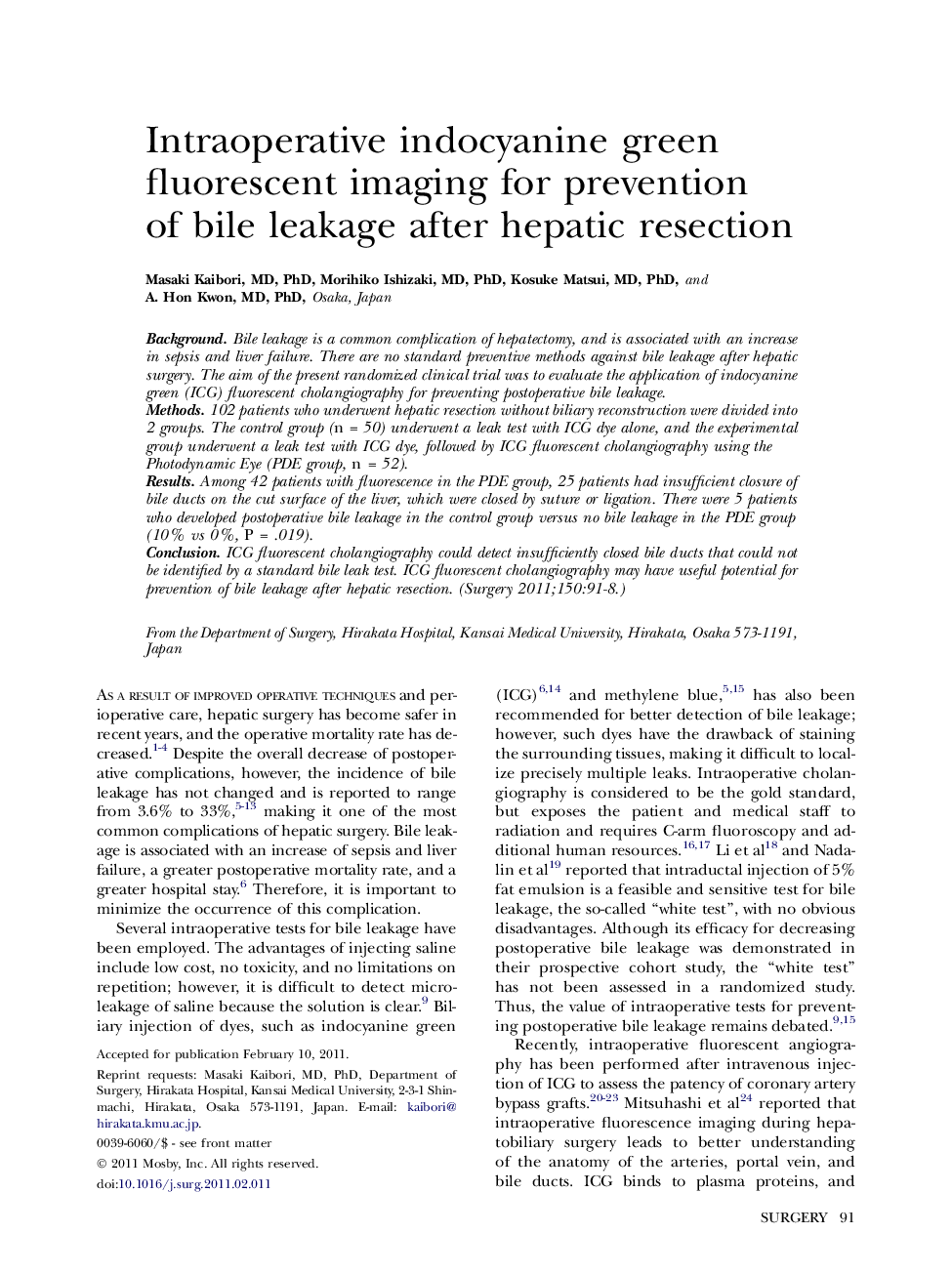| Article ID | Journal | Published Year | Pages | File Type |
|---|---|---|---|---|
| 4307870 | Surgery | 2011 | 8 Pages |
BackgroundBile leakage is a common complication of hepatectomy, and is associated with an increase in sepsis and liver failure. There are no standard preventive methods against bile leakage after hepatic surgery. The aim of the present randomized clinical trial was to evaluate the application of indocyanine green (ICG) fluorescent cholangiography for preventing postoperative bile leakage.Methods102 patients who underwent hepatic resection without biliary reconstruction were divided into 2 groups. The control group (n = 50) underwent a leak test with ICG dye alone, and the experimental group underwent a leak test with ICG dye, followed by ICG fluorescent cholangiography using the Photodynamic Eye (PDE group, n = 52).ResultsAmong 42 patients with fluorescence in the PDE group, 25 patients had insufficient closure of bile ducts on the cut surface of the liver, which were closed by suture or ligation. There were 5 patients who developed postoperative bile leakage in the control group versus no bile leakage in the PDE group (10% vs 0%, P = .019).ConclusionICG fluorescent cholangiography could detect insufficiently closed bile ducts that could not be identified by a standard bile leak test. ICG fluorescent cholangiography may have useful potential for prevention of bile leakage after hepatic resection.
